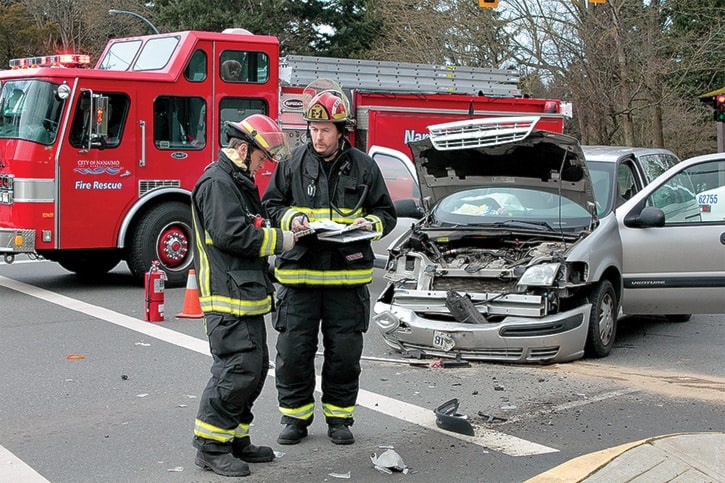A report looking into ways to meet increasing demand for emergency response services was referred back to city staff for review during Monday’s city council meeting.
Since 2005, the city’s goal has been to have the first fire engine on an emergency scene within six minutes. To meet that goal and maintain sustainable costs, the report proposes building more small halls, staffed with two firefighters per shift, with additional equipment and firefighters moved into areas as risk of incidents rises throughout the day, such as during rush hour when motor vehicle accidents become more frequent in certain areas.
Currently, halls are staffed with three to four firefighters per shift.
Nanaimo Fire Rescue currently averages about 6,500 calls per year and annual demand continues to rise steadily with more than 9,000 anticipated annually by 2024.
The new model proposed in the report is based on changing requirements. Historically Nanaimo Fire Rescue dealt with structure fires, which now only account for 1.7 per cent of calls for service. Most structure fires occur in central Nanaimo and the downtown core areas. Because of older construction, fires in those areas are the most severe, cause the most damage and present the highest risk for injury or death.
Across the city medical aid and motor vehicle accident calls account for well over 70 per cent of firefighter responses.
The report was presented with the intent of having council receive and review the material and move on to consultation with firefighters, citizens, other emergency response agencies and other stakeholders, the results of which would be presented to council for further consideration in May. But in a five-to-three vote, the report was effectively rejected and referred back to city staff to give further consideration to comments councillors expressed at the meeting.
A major sticking point appeared to be the report’s recommendation for two-man crews. Cost savings achieved by building two-man fire halls versus staying with a traditional four-man hall model could tally more than $4 million in savings annually by 2024.
The report also called for additional investment, training and reliance on paid, on-call firefighters to supplement manpower during major emergencies.
“I’m starting to regret that I made this motion to review the fire plan,” said Coun. Ted Greves. “My motion was to update the response coverage study to reflect current conditions and to best meet the standard of the first engine on scene within six minutes 90 per cent of the time and I was assuming that that would be a four-man engine… I don’t think our target in 2005 says four-man engine. It says six minutes 90 per cent of the time, so I guess we kind of goofed on that one.”
Coun. Diane Brennan rejected the report outright and said putting it forward for consultation implied council was giving a green light to its recommendations.
“I think it’s implicit in the notion of receiving it that we’re satisfied with the recommended direction and I’m not,” Brennan said. “I’m not satisfied that council’s intent was ever to abandon the movement towards professional service in favour of a new business model and for those reasons I won’t support receiving this report.”
Coun. Bill Bestwick voted to refer the report back to city staff, but said he did not think receiving it indicated council’s endorsement.
Nor did Fred Pattje, Diana Johnstone or Mayor John Ruttan, who voted in favour of receiving the report.
“I’d like to be able to think that we have the opportunity before us now to morph something that might work without just dismissing everything,” Bestwick said. “We might be able to have a combination of things that may work for us.”
“The risk-based staffing issue appeared to be the most contentious issue,” said Ron Lambert, Nanaimo Fire Rescue chief. “The idea was if the risk increased in a certain area, then we staff up in that area. It’s an issue of productivity and affordability.”
Council gave no instructions on how to rework the report other than to consider councillors’ comments.
Lambert did not know when the report would be presented to council again.
“We’re actually going to meet to review and try and understand what council wants and then proceed to taking it back to council,” Lambert said.
